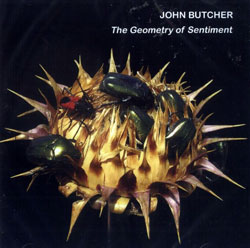
Sonic experiments and solo improvisations on tenor and soprano with 2 pieces using amplified feedback, and 1 piece dedicated to Derek Bailey.
Out of Stock
Quantity in Basket: None
Log In to use our Wish List
Shipping Weight: 6.00 units
Sample The Album:
John Butcher-tenor or soprano saxophone (amplified/feedback on 3 & 6)
Click an artist name above to see in-stock items for that artist.
UPC: 5030243414222
Label: Emanem
Catalog ID: 4142
Squidco Product Code: 8792
Format: CD
Condition: New
Released: 2007
Country: Great Britain
Packaging: Jewel Tray
Digital recordings: 1 & 2 Tochigi, Utsunomiya (Oya Stone Museum) by Misumi San - 2004 November 7 / 3 & 6 London (LMC at Candid Arts) by David Reid - 2006 May 28 / 4 Paris, Montreuil (Les Instants Chavirés) by Ètienne Foyer - 2006 November 10 / 5 London (Red Rose Club) by Tim Fletcher - 2006 October 26 / 7 Oberhausen (Gazometer) by Mikkel Meyer - 2006 September 29
"I do not know who was first to comment on the extent to which Butcher's acoustic preoccupations produce results that seem electronic, or whether it preceded his interest in electronic feedback and amplified saxophone. It's a resemblance that seems to go to the mystery and heart of his music and what I read as concerns with process, time, place and causality - feedback, yes, but feed-forward, too, as if what we have heard is somehow produced by what will come later, as if we ultimately await causality.
In John Butcher's practice there is clearly a concern with place - each location duly noted - just as there is a concern with variety - the alterations brought about by a series of performance spaces. His solo CDs are characteristically a selection of live recordings from varied sites - there is no special consistency of the auditory situation. The individual take is privileged, but the notion of a changing space (changing space) seems paramount too. A notion of sound reproduction as electronically conditioned is also paramount, thus the measured proximity to the microphone and the way in which it recasts the horn's harmonic profile. Perhaps it is the way in which the electronic magnifies the behaviour of acoustic space at the same time that it makes it invisible.
In Butcher's hands the saxophone's existence as a column of air, as a vibrating reed, as a system of keys and pads, becomes central, suggesting the saxophone as mechanism and intermediary, a kind of delicate and complex scientific instrument of measurement whether meant for the laboratory or, more likely, the voyage (saxophone and astrolabe made of the same metal). There is a photograph of John Butcher in a windy spot in Scotland holding his saxophone aloft and allowing the wind itself to play the saxophone, but the saxophone is also amplified and he appears to be playing the keys. This simultaneous space constructed of the acoustic and the electronic seems germane to where we place the Butcher performance, in which the recording itself involves averaging, chance or even transformative occurrences. It is as if the contours of the site of realization disappear into the work and the listener disappears into it as well.
In the present sequence there's a back-and-forth movement that suggests a stepped pyramid, the music beginning and ending in the lower voice of the tenor saxophone and in the most spectacular of spaces, then ascending through pitch to the soprano and to the quotidian worlds of London, Paris and electricity before descending on another side.
The opening and closing environments are so startling as to overdetermine the site of production, places so strange that they transcend our usual notions of environment, extending the notion of collaboration. The pieces join and extend a certain tradition of environmental saxophone music, primarily Swiss, that includes Werner Ludi's recordings inside the vast Lucendro dam and September Wind's recordings in an empty water cistern above Zurich.
The first two tracks were recorded in the Oya Stone Museum, an enormous geometrical space created by the mining of oya stone. The gallery is thus a space inside an absolute mass, enjoying, like natural caves, its own micro-climate. In the First Zizoku the space seems to harmonise and orchestrate Butcher's long tones. Then, playing oscillating arpeggio-like figures against (and with) the vast rock walls in the Second Zizoku, he builds a counter-wall of sound, playing with chromatic shifts to heighten the reverberations. There is a sense in which the sound is itself a living entity and that it draws that life from the stone as well as the human agency.
One of the unusual aspects of Butcher's use of electronic feedback is the extent to which it creates another series of illusion. Rather than sounding specifically electronic, it will suggest other instruments, often a kind of underwater muffling. The soprano of A short time to sing is to some degree percussive. There is as much sonic alteration in the acoustic But more so with its introductory motivic development in which a secondary line is suggested by slightly muffled microtones (the mutation of multiphonics). It eventually reaches an expressive peak in which the abrasive grit of the sound is seemingly dialed in and out (displacing, misplacing or even replacing the usual notion of what is giving expression to whom). That traditional pattern of development is also true of the early-going linear segment of Action Theory Blues (in which a glissando suggests the clarinets of the 1920s), while there is a moment in Soft Logic in which a sound in the environment appears to trigger an alarm in the saxophone.
The concluding performance takes place in the gasometer in Oberhausen, Germany, an enormous near-cylindrical form (it has 24 sides) constructed in 1929 to hold the gas needed by nearby manufacturers. A parody of a canister, the world's ultimate pressurized can, it is 117 metres high with a diameter of 68 metres. Rebuilt in 1949 after war-time damage, it was employed as a storage facility for coke gas until it was retired in 1989. Eventually renovated as an exhibition space, the gasometer has an extraordinary 8-time echo. We might be invited, I think, to view this as purely acoustic space (or carrier frequency) but it is a special kind of industrial archaeology, a work of menacing scale and once perfectly toxic environment (the gasometer is a kind of Forbidden Planet) that has been reclaimed as a vertical theme park, a self-declared 'industrial cathedral'. Butcher's performance here exploits the gasometer's resonance for a work of solemnity and majesty, triggering a space in which each minutia of sound is magnified into a cataclysm. Each sonic gesture appears to be a very precise measurement, as if Butcher is surveying its time (the echo, history) as well as its singular space. How odd, too, that a gas chamber should sound electric."-Stuart Broomer, from the liner notes
Artist Biographies
• Show Bio for John Butcher "John Butcher's work ranges through improvisation, his own compositions, multitracked pieces and explorations with feedback and extreme acoustics.Originally a physicist, he left academia in '82, and has since collaborated with hundreds of musicians - Derek Bailey, John Tilbury, John Stevens, The EX, Akio Suzuki, Gerry Hemingway, Polwechsel, Gino Robair, Rhodri Davies, Okkyung Lee, John Edwards, Toshi Nakamura, Paul Lovens, Eddie Prevost, Mark Sanders, Christian Marclay, Otomo Yoshihide, Phil Minton, and Andy Moor - to name a few. He is well known as a solo performer who attempts to engage with the uniqueness of place. Resonant Spaces is a collection of site-specific performances collected during a tour of unusual locations in Scotland and the Orkney Islands.His first solo album, Thirteen Friendly Numbers, includes compositions for multitracked saxophones, whilst later solo CDs focus on live performance, composition, amplification and saxophone-controlled feedback. HCMF has twice commissioned him to compose for his own large ensembles. Other commissions include for Elision (Australia), the Rova (USA) & Quasar (Canada) Saxophone Quartets, reconstructed Futurist Intonarumori (USA), "Tarab Cuts" (based on pre-WWII Arabic recordings, and shortlisted for the 2014 British Composer's Award) and "Good Liquor .." for the London Sinfonietta. In 2011 he received a Paul Hamlyn Foundation Award for Artists. Recent groupings include The Apophonics with Robair and Edwards, Anemone with Peter Evans, Plume with Tony Buck & Magda Mayas and a trio with Okkyung Lee & Mark Sanders.Butcher values playing in occasional encounters - ranging from large groups such as Butch Morris' London Skyscraper and the EX Orkestra, to duo concerts with David Toop, Kevin Drumm, Claudia Binder, Paal Nilssen-Love, Thomas Lehn, Fred Frith, Keiji Haino, Ute Kangeisser, Matthew Shipp and Yuji Takahashi." ^ Hide Bio for John Butcher
11/20/2024
Have a better biography or biography source? Please Contact Us so that we can update this biography.
Track Listing:
1. First Zizoku 8:00
2. Second Zizoku 11:06
3. A Short Time To Sing 5:58
4. But More So (For Derek Bailey) 7:02
5. Action Theory Blues 12:42
6. Soft Logic 4:56
7. TrÄGerfrequenz 9:08
EMANEM & psi
Improvised Music
European Improv, Free Jazz & Related
Electro-Acoustic
Electro-Acoustic Improv
John Butcher
September 2007
London & UK Improv & Related Scenes
Free Improvisation
Recordings by or featuring Reed & Wind Players
Instant Rewards
Search for other titles on the label:
Emanem.


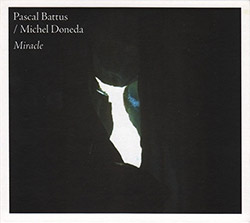







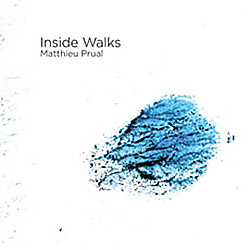
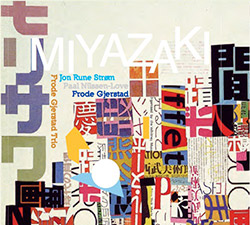


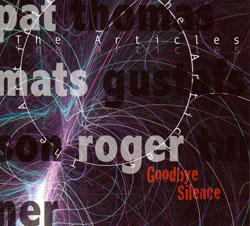
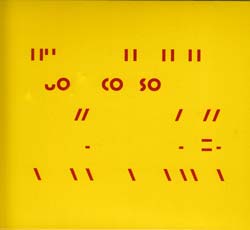
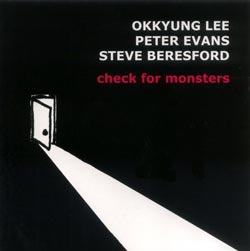
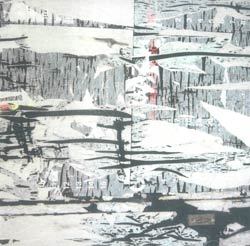
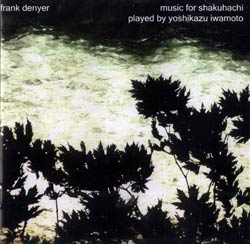
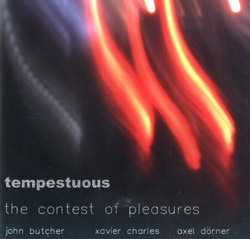
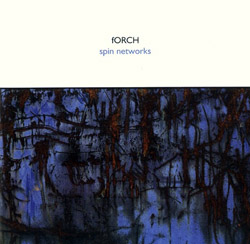
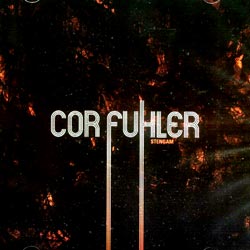
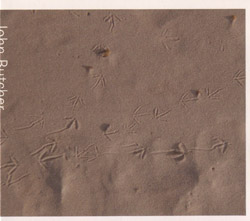
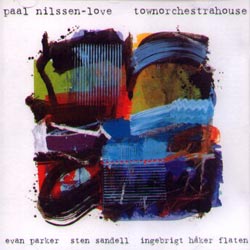















![Barker / Parker / Irabagon: Bakunawa [VINYL]](https://www.teuthida.com/productImages/misc4/35533.jpg)
![Blaser, Samuel / Marc Ducret / Peter Bruun: Dark Was The Night, Cold Was The Ground [VINYL 10-inch]](https://www.teuthida.com/productImages/misc4/35492.jpg)










![Warren, Kenny (Warren / Hoffman / Ellman): Sweet World [VINYL]](https://www.teuthida.com/productImages/misc4/35451.jpg)


![Blake, Ran / Dave Knife Fabris: Live Amsterdam 2006, First Visit [CD + POSTCARDS]](https://www.teuthida.com/productImages/misc4/35275.jpg)
![Sanna, Claudio: Compositori Sardi Contemporanei II [2 CDs]](https://www.teuthida.com/productImages/misc4/35317.jpg)












![Nevai, Nandor: <<The PRICE of FRONTIER>> Book 1: FULK [BOOK + 4 CDs]](https://www.teuthida.com/productImages/misc4/35464.jpg)
![Nevai, Nandor: <<The PRICE of FRONTIER>> Book 2: MARTIAL [BOOK + 4 CDs]](https://www.teuthida.com/productImages/misc4/35465.jpg)
![Nevai, Nandor: <<The PRICE of FRONTIER>> Book 3: JASSOM [BOOK + 4 CDs]](https://www.teuthida.com/productImages/misc4/35466.jpg)
![Nevai, Nandor: <<The PRICE of FRONTIER>> Book 4: HARD-WON [BOOK + 4 CDs]](https://www.teuthida.com/productImages/misc4/35467.jpg)

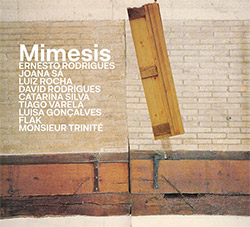




![DNS: Taking Big Bites Of The Khandas Three Cafes Deep [2 CDs]](https://www.teuthida.com/productImages/misc4/35334.jpg)




![Cleaver, Gerald: The Process [VINYL]](https://www.teuthida.com/productImages/misc4/34966.jpg)




![Alva Noto: HYbr:ID II [VINYL 2 LPs]](https://www.teuthida.com/productImages/misc4/35201.jpg)

![Baron, Derek / Luke Martin: Distinct and Concealed [CASSETTE + DOWNLOAD]](https://www.teuthida.com/productImages/misc4/35079.jpg)

![Lyle, Erica Dawn : Colonial Motels [CASSETTE + DOWNLOAD]](https://www.teuthida.com/productImages/misc4/35080.jpg)







![Alva Noto: HYbr:ID III [VINYL 2 LPs]](https://www.teuthida.com/productImages/misc4/35011.jpg)
![Kubisch, Christina / Trondheim Voices: Stromsanger 2022 For Six Voices And Electromagnetic Waves [VINYL]](https://www.teuthida.com/productImages/misc4/34628.jpg)








![Zurria, Manuel: Fame di Vento [3 CDs]](https://www.teuthida.com/productImages/misc4/35167.jpg)

![Granberg, Magnus / Nattens Inbrott / Skogen: Holde Traume, Kehret Wieder! [2 CDs]](https://www.teuthida.com/productImages/misc4/35038.jpg)
![Frey, Jurg: Outermost Melodie [2 CDs]](https://www.teuthida.com/productImages/misc4/35039.jpg)

![Pavone, Jessica: Reverse Bloom [VINYL]](https://www.teuthida.com/productImages/misc4/34895.jpg)




![Modney (Modney / Wooley / Gentile / Roberts / Pluta / Symthe / ...): Ascending Primes [2 CDs]](https://www.teuthida.com/productImages/misc4/34852.jpg)








![Elephant9 with Terje Rypdal: Catching Fire [VINYL 2 LPs]](https://www.teuthida.com/productImages/misc4/35355.jpg)
![Deerlady (Obomsawin, Mali / Magdalena Abrego): Greatest Hits [VINYL]](https://www.teuthida.com/productImages/misc4/34876.jpg)




![Haino, Keiji: Black Blues [2 CDs]](https://www.teuthida.com/productImages/misc4/35109.jpg)



![Surplus 1980: Illusion of Consistency [CD]](https://www.teuthida.com/productImages/misc4/35069.jpg)
![Staiano, Moe: Away Towards the Light [VINYL + DOWNLOAD]](https://www.teuthida.com/productImages/misc4/35037.jpg)
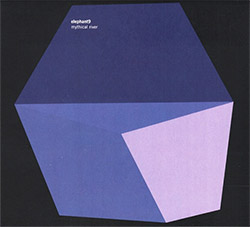



![Caveira (Gomes / Sousa / Abras / Ferrandini): Ficar Vivo [VINYL]](https://www.teuthida.com/productImages/misc4/34643.jpg)
![Gregg, J. J. / David Van Auken: Lunar Prairie [CD w/ DOWNLOAD]](https://www.teuthida.com/productImages/misc4/34611.jpg)

![Coultrain: Mundus [VINYL]](https://www.teuthida.com/productImages/misc4/32439.jpg)
![Mattin: Songbook #6 [VINYL]](https://www.teuthida.com/productImages/misc4/27317.jpg)
![Punkappella: Wake Up [7-inch VINYL]](https://www.teuthida.com/productImages/misc4/17519.jpg)
![Residents, The: WARNING: UNiNC.: Live And Experimental Recordings 1971-1972 [VINYL 2 LPs]](https://www.teuthida.com/productImages/misc4/31521.jpg)
![Coultrain: Phantasmagoria [VINYL]](https://www.teuthida.com/productImages/misc4/30142.jpg)
![Lennon, Sean Ono: Asterisms [VINYL]](https://www.teuthida.com/productImages/misc4/34517.jpg)

![Rotem Geffen: The Night Is The Night [VINYL]](https://www.teuthida.com/productImages/misc4/34631.jpg)
![Coley, Byron: Dating Tips for Touring Bands [VINYL]](https://www.teuthida.com/productImages/misc4/17906.jpg)

![Lost Kisses: My Life is Sad & Funny [DVD]](https://www.teuthida.com/productImages/misc4/lostKissesDVD.jpg)